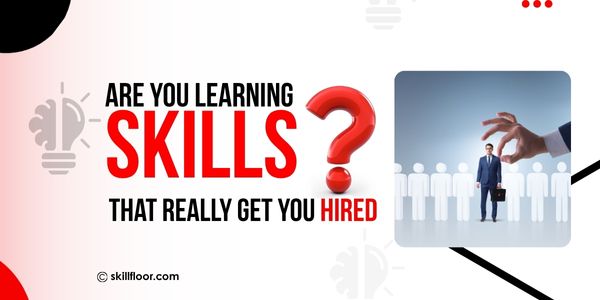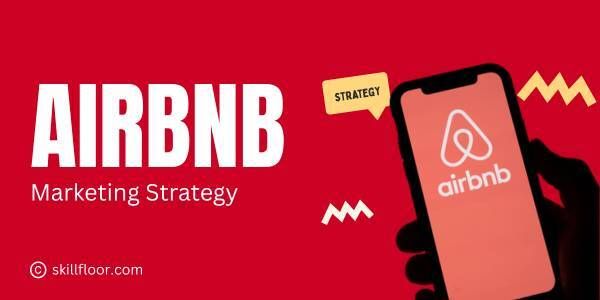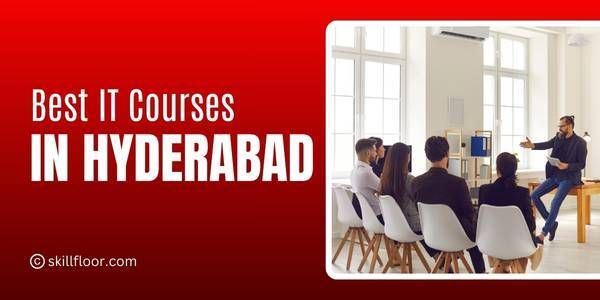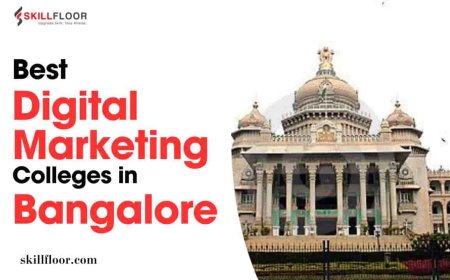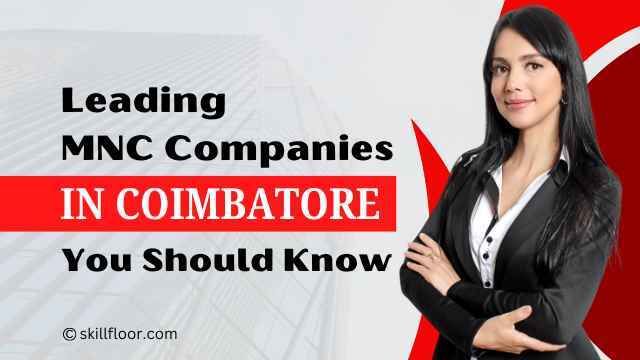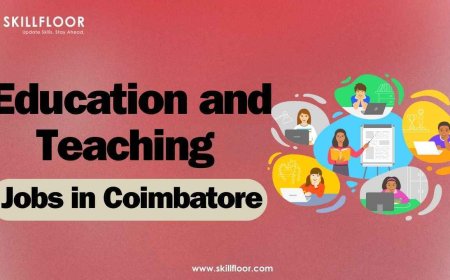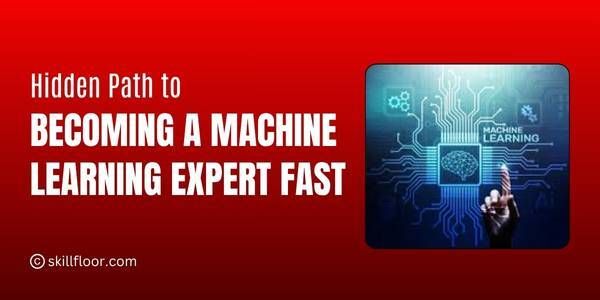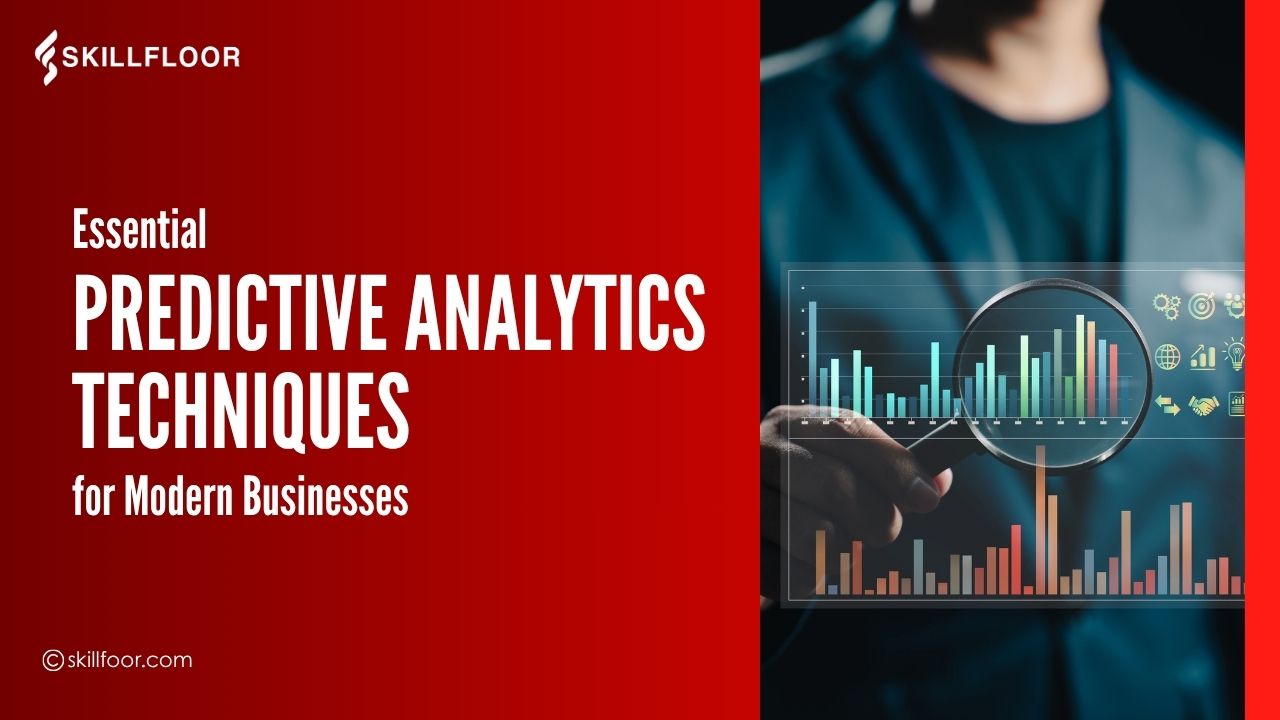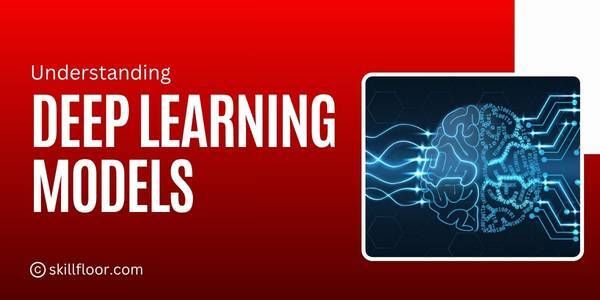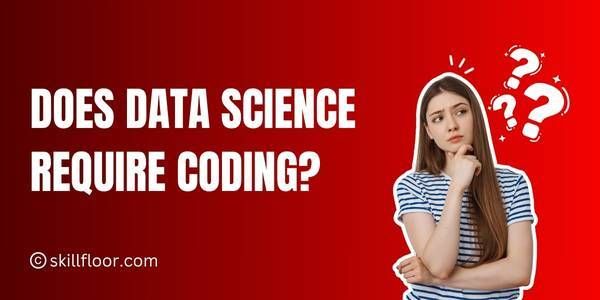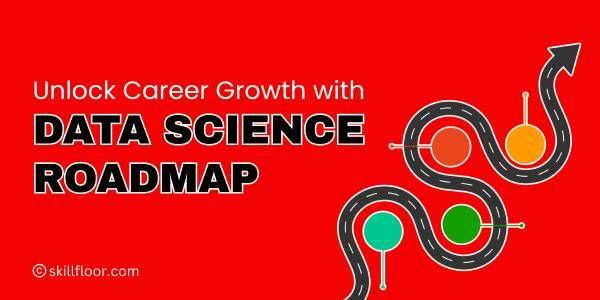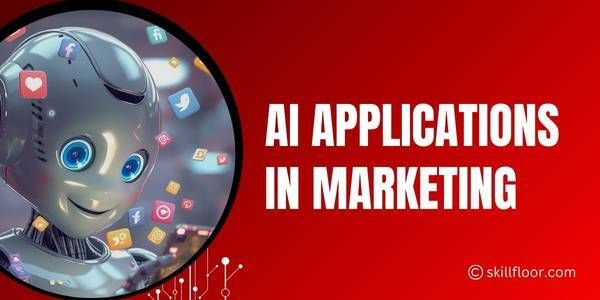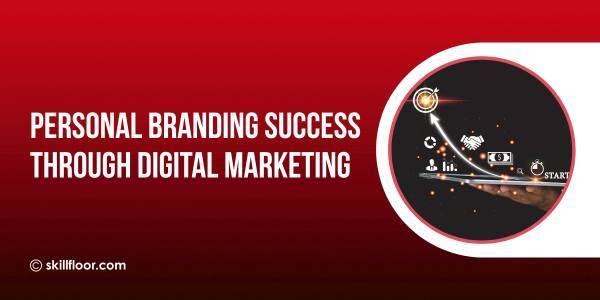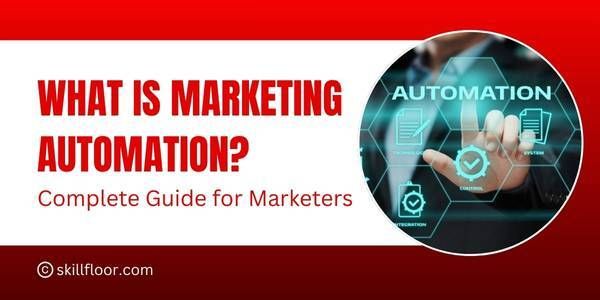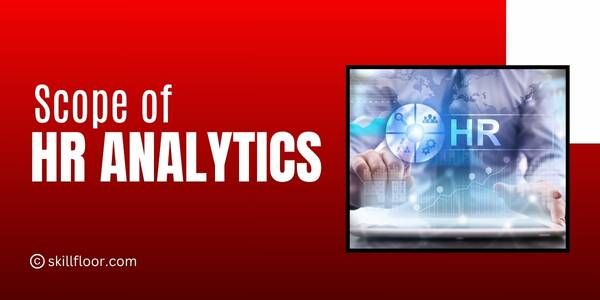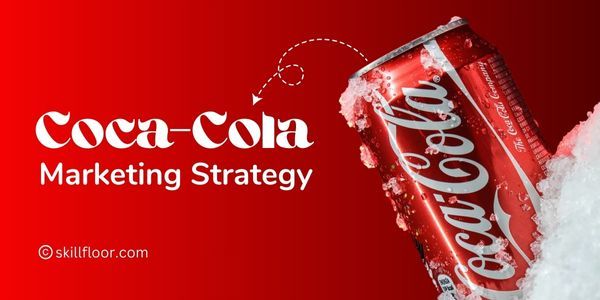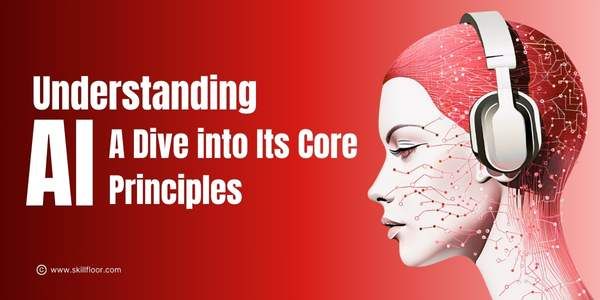Top 100 Digital Marketing Interview Questions and Answers
Prepare for your next job with these essential digital marketing interview questions and answers. Covers SEO, PPC, social media, email, and analytics

Preparing for a digital marketing interview requires a solid understanding of various domains such as SEO, PPC, social media, Google Ads, and more. Whether you're a fresher entering the field or an experienced professional aiming for a higher role, knowing the right answers to commonly asked questions can significantly boost your confidence. In this comprehensive guide, we cover top digital marketing interview questions and answers tailored for freshers, experienced candidates, and specific categories like SEO, PPC, social media, and technical digital marketing. Use this blog to sharpen your knowledge and increase your chances of landing your dream role.
Table of Contents
1. Digital marketing interview questions and answers for freshers
2. Digital marketing interview questions and answers for experienced
3. SEO interview questions and answers
4. Social media marketing interview questions and answers
5. PPC interview questions and answers
6. Google Ads interview questions and answers
7. Technical digital marketing interview questions and answers
Digital Marketing Interview Questions and Answers for Freshers
Q1. What is digital marketing?
Digital marketing refers to all marketing efforts that use the internet or electronic devices to promote products or services. It involves channels like search engines, social media, email, websites, and mobile apps. The goal is to connect with customers where they spend the most time online. For freshers, understanding the basics of SEO, PPC, content marketing, email campaigns, and analytics is crucial to building a strong foundation in digital marketing.
Q2. What are the different types of digital marketing?
There are several types of digital marketing, including:
1. Search Engine Optimization (SEO)
2. Pay-Per-Click Advertising (PPC)
3. Social Media Marketing (SMM)
4. Content Marketing
5. Email Marketing
6. Affiliate Marketing
7. Mobile Marketing
Each type plays a specific role in reaching and converting the target audience. A good digital marketer knows how to use these channels in a coordinated way.
Q3. Why is digital marketing important?
Digital marketing is important because it allows businesses to reach a global audience cost-effectively and measurably. It enables precise targeting, personalization, real-time analytics, and the ability to quickly test and optimize campaigns. For small businesses and startups, it offers the ability to compete with larger organizations by reaching their audience through channels like SEO, social media, and email.
Q4. What is the difference between SEO and SEM?
SEO (search engine optimization) is the process of optimizing a website to rank higher in organic (unpaid) search engine results. SEM (search engine marketing) includes paid search advertising like Google Ads. SEO is a long-term strategy for gaining free traffic, while SEM involves paying for visibility. Both are essential parts of digital marketing and are often used together for better results.
Q5. What is a landing page?
A landing page is a standalone web page created specifically for a marketing or advertising campaign. It's where a visitor 'lands' after clicking on a link in an email, ad, or social media post. The primary purpose of a landing page is to drive a specific action, such as signing up, purchasing, or downloading something. Unlike homepages, landing pages focus on one goal.
Q6. What is Google Analytics?
Google Analytics is a free tool that helps you track and report website traffic. It provides insights into how users interact with your website, including where they come from, how long they stay, and what actions they take. For freshers, learning to read basic metrics like sessions, bounce rate, and conversion rate is vital for evaluating digital marketing effectiveness.
Q7. Explain the concept of a sales funnel.
A sales funnel is a model that represents the journey a customer takes from first discovering a product to making a purchase. The stages typically include Awareness, Interest, Decision, and Action (AIDA). Digital marketers use content, emails, ads, and retargeting to guide users through each stage of the funnel to increase conversions.
Q8. What are keywords in digital marketing?
Keywords are the specific words or phrases that people type into search engines when looking for information. In digital marketing, they are used to optimize content (SEO), run PPC campaigns, and understand user intent. Choosing the right keywords helps your content appear in search results and reach the target audience effectively.
Q9. What is the role of content in digital marketing?
Content plays a central role in digital marketing. It helps attract, educate, and convert users. Whether it’s blog posts, videos, infographics, or social media updates, content is what delivers value to your audience and keeps them engaged. Good content also supports SEO, increases trust, and drives conversions.
Q10. What is the difference between bounce rate and exit rate?
Bounce rate is the percentage of visitors who leave a site after viewing only one page. Exit rate is the percentage of users who leave a specific page, regardless of how many pages they visited before. A high bounce rate may indicate irrelevant content, while a high exit rate on a checkout page may suggest issues with the purchase process.
Q11. How do you stay updated in digital marketing?
To stay updated in digital marketing, follow industry blogs (like Moz, HubSpot, Neil Patel), attend webinars, join forums, subscribe to newsletters, and experiment with new tools. Platforms like Google Skillshop, LinkedIn Learning, and Coursera also offer up-to-date courses. Continuous learning is essential due to the fast-paced evolution of digital marketing.
Q12. What is CTR, and why is it important?
CTR (Click-Through Rate) is the ratio of users who click on a link to the number of users who view it. It’s important because it measures the effectiveness of your ad copy or email subject lines. A high CTR usually indicates that your message is relevant and engaging to your audience.
Q13. Name some digital marketing tools.
Popular digital marketing tools include Google Analytics, SEMrush, Ahrefs, Canva, Hootsuite, Mailchimp, Google Ads, and Buffer
These tools help with SEO, analytics, content creation, scheduling, email campaigns, and more.
Q14. What is the importance of mobile marketing?
Mobile marketing is essential because most users access the internet via mobile devices. It includes SMS campaigns, mobile-friendly websites, and in-app advertising. Ensuring your marketing strategy is mobile-optimized improves reach, user experience, and conversion rates. Google also prioritizes mobile-first indexing, making mobile responsiveness critical for SEO.
Q15. What is the difference between organic and paid results?
Organic results are unpaid listings that appear based on their relevance to the search query (SEO), while paid results are advertisements that appear at the top or bottom of search engine pages (PPC). Organic results take time to rank but are more sustainable long-term. Paid results provide instant visibility but require an ongoing budget.
Digital Marketing Interview Questions and Answers for Experienced
Q1. How do you develop a comprehensive digital marketing strategy?
A comprehensive digital marketing strategy begins with understanding the business objectives, target audience, and competitive landscape. It includes identifying key marketing channels (SEO, SEM, social media, email), setting SMART goals, conducting keyword and audience research, planning a content calendar, and establishing performance KPIs. Experienced marketers also integrate data analytics tools to measure campaign effectiveness and use A/B testing to optimize efforts.
Q2. What KPIs do you track in a digital marketing campaign?
Key performance indicators (KPIs) vary by campaign objective but typically include:
- Website traffic
- Conversion rate
- Cost per acquisition (CPA)
- Click-through rate (CTR)
- Bounce rate
- Customer lifetime value (CLV)
Tracking KPIs helps measure performance and inform data-driven decision-making.
Q3. How do you handle a drop in website traffic?
When traffic drops, the first step is diagnosing the root cause using tools like Google Analytics, Search Console, and SEMrush. Possible causes include algorithm updates, technical issues, changes in content strategy, or reduced backlink quality. The solution involves fixing technical SEO errors, updating outdated content, restoring lost backlinks, and ensuring consistency in content publishing and promotional strategies.
Q4. Explain the role of A/B testing in digital marketing.
A/B testing is used to compare two versions of a web page, email, or ad to determine which performs better. Marketers test variables like headlines, CTAs, images, or layouts to improve conversions. It allows data-backed decisions, reduces guesswork, and enhances user experience. Tools like Google Optimize or Optimizely facilitate A/B testing.
Q5. How do you plan and execute a content marketing strategy?
A content marketing strategy starts with identifying audience personas, content goals, and preferred formats (blogs, videos, infographics). It includes keyword research, a publishing calendar, SEO optimization, content distribution, and engagement tracking. Performance is reviewed regularly to update content and improve reach. Successful strategies align with customer journeys and focus on delivering value.
Q6. Describe your experience with marketing automation tools.
Marketing automation tools like HubSpot, Marketo, and Mailchimp help streamline repetitive tasks such as email campaigns, lead nurturing, and social media scheduling. I’ve used automation to segment audiences, personalize email content, score leads, and trigger workflows based on user behavior. Automation enhances efficiency and helps scale campaigns without losing personalization.
Q7. What’s your approach to managing a multi-channel campaign?
Managing a multi-channel campaign involves planning consistent messaging across platforms (email, search, social, display), aligning goals, and using tools like Hootsuite, SEMrush, and CRM systems. It requires regular monitoring of each channel’s performance, adjusting budgets and strategies, and maintaining brand voice. Integration and coordination are key for seamless execution.
Q8. How do you calculate ROI in digital marketing?
ROI (Return on Investment) is calculated as (Revenue - Cost) / Cost x 100. It evaluates the profitability of campaigns. Tools like Google Analytics and CRM software help attribute conversions to specific channels. For example, if a campaign cost ₹10,000 and generated ₹25,000 in sales, the ROI would be 150%. Tracking ROI helps optimize spending across channels.
Q9. What experience do you have with budget planning?
Budget planning involves allocating resources based on goals, past performance, and expected ROI. I analyze the cost-effectiveness of channels (e.g., lower CPA in Google Ads vs. social media), forecast outcomes, and adjust plans monthly or quarterly. Budgeting also includes contingency funds and A/B test allocations. Regular reporting ensures transparency and control.
Q10. How do you integrate SEO and SEM strategies?
Integrating SEO and SEM creates synergy. While SEO drives long-term organic traffic, SEM provides immediate visibility. Keyword research informs both strategies. For example, high-performing paid keywords can guide SEO content. Shared landing pages, consistent messaging, and combined analytics improve efficiency. Together, they cover both short-term wins and long-term growth.
Q11. How do you manage a digital marketing team?
Team management involves setting clear goals, defining roles, and facilitating collaboration. I use tools like Trello, Slack, and Asana for project management. Regular meetings, performance reviews, and training sessions help maintain productivity. Encouraging innovation and maintaining an open communication culture are key to motivating a digital marketing team.
Q12. Describe a challenge you faced in a campaign and how you overcame it.
In one campaign, the client’s lead quality dropped despite high traffic. I reviewed the funnel, found misalignment in targeting, and adjusted the audience filters and ad copy. We also optimized landing pages and added lead qualification questions. These changes improved lead quality and conversion rate within three weeks.
Q13. What is your approach to competitor analysis?
Competitor analysis starts with identifying key competitors and evaluating their digital presence using tools like Ahrefs, SEMrush, and SimilarWeb. I review their keyword rankings, backlink profiles, content strategies, and social media activity. This helps identify opportunities and gaps in our strategy, benchmark performance, and discover potential partnerships or backlink sources.
Q14. What’s the role of customer personas in marketing strategy?
Customer personas represent your ideal buyers based on research and data. They include demographics, goals, challenges, and behavior patterns. Personas guide messaging, content creation, channel selection, and ad targeting. Building accurate personas ensures marketing campaigns resonate with the right audience, improving engagement and conversion rates.
Q15. How do you stay ahead of digital marketing trends?
I follow trusted sources like Search Engine Journal, HubSpot, and Google’s blog. I attend webinars and industry events and complete online certifications regularly. Experimenting with new tools and strategies helps apply trends practically. Networking with other marketers also provides insights into what’s working in real-world scenarios.
SEO Interview Questions and Answers
Q1. What is SEO, and why is it important?
SEO (search engine optimization) is the process of optimizing websites to rank higher in search engine results pages (SERPs). It improves visibility, organic traffic, and user experience. SEO is important because it drives free, consistent traffic, builds brand credibility, and improves ROI over time. A well-optimized website is more discoverable and relevant to user queries.
Q2. What are the main types of SEO?
The three main types of SEO are:
1. On-page SEO – optimizing content, HTML, and site structure.
2. Off-page SEO – building backlinks and online authority.
3. Technical SEO – improving site speed, mobile-friendliness, and crawlability.
Each type plays a vital role in achieving and maintaining strong search rankings.
Q3. What are keywords, and how do you use them in SEO?
Keywords are the terms users type into search engines. They guide search engines in understanding content relevance. In SEO, keywords should be used in:
- Titles
- Meta descriptions
- Headings
- URLs
- Image alt texts
- Content body
Keyword research tools like Google Keyword Planner and SEMrush help identify relevant search terms.
Q4. What is the difference between white hat and black hat SEO?
White hat SEO follows search engine guidelines and focuses on providing value to users. Tactics include high-quality content, proper keyword usage, and ethical link-building. Black hat SEO involves manipulative practices like keyword stuffing, cloaking, and buying links. While black hat may offer short-term gains, it risks penalties or de-indexing from search engines.
Q5. What is a backlink, and why is it important?
A backlink is a link from another website to your own. It acts as a vote of confidence and improves your site's authority. Search engines use backlinks as a ranking factor—sites with quality backlinks typically rank higher. Focus on getting backlinks from reputable, relevant websites using ethical outreach and content marketing strategies.
Q6. What is domain authority?
Domain Authority (DA) is a metric developed by Moz to predict how well a website will rank on SERPs. It ranges from 1 to 100; higher scores mean stronger ranking potential. Factors affecting DA include the number and quality of backlinks, site structure, and content relevance. DA should be used to benchmark SEO progress.
Q7. What is an XML sitemap, and why is it important?
An XML sitemap is a file that lists all the important URLs on a website. It helps search engines crawl and index your site more efficiently. Submitting an XML sitemap to Google Search Console ensures that all content, including pages not easily discoverable through navigation, is considered for indexing.
Q8. How do you perform keyword research?
Keyword research involves identifying the terms your target audience searches for. Use tools like Google Keyword Planner, Ubersuggest, SEMrush, Ahrefs
Focus on keywords with high search volume and low competition. Consider user intent, long-tail keywords, and competitor analysis to refine your list.
Q9. What is the role of meta tags in SEO?
Meta tags provide information about a webpage to search engines and users. Key meta tags include:
- Title Tag: Appears on SERPs and browser tabs.
- Meta Description: Summarizes page content on SERPs.
Properly optimized meta tags improve click-through rates and help search engines understand page relevance.
Q10. What is a canonical tag?
A canonical tag is an HTML element that helps prevent duplicate content issues by specifying the 'preferred' version of a web page. It tells search engines which version to index when multiple URLs have similar or identical content. Using canonical tags helps consolidate link equity and avoid ranking penalties.
Q11. What is page speed, and how does it impact SEO?
Page speed refers to how fast your content loads. Google considers it a ranking factor, especially for mobile users. A slow-loading site can increase bounce rate and lower user satisfaction. Use tools like Google PageSpeed Insights or GTmetrix to analyze and improve speed by optimizing images, leveraging caching, and minimizing JavaScript.
Q12. How do you optimize images for SEO?
Image SEO includes:
- Using descriptive file names
- Adding relevant alt text
- Compressing images to reduce load time
- Using proper file formats (e.g., WebP)
- Creating image sitemaps
These practices enhance accessibility and improve SEO performance by contributing to page relevance and loading speed.
Q13. What is mobile-first indexing?
Mobile-first indexing means Google primarily uses the mobile version of a website for indexing and ranking. It reflects the growing use of mobile devices. To prepare, ensure your site is responsive, loads quickly on mobile, and contains the same content and metadata as the desktop version.
Q14. How do you monitor SEO performance?
Monitor SEO using tools like
- Google Analytics (traffic, behavior, conversions)
- Google Search Console (indexing, search queries, coverage issues)
- SEMrush/Ahrefs (rank tracking, backlinks, site audits)
Track metrics such as keyword rankings, organic traffic, bounce rate, and domain authority to assess performance.
Q15. What is local SEO?
Local SEO optimizes your online presence for local searches. It involves
- Google My Business optimization
- Local keyword targeting
- Building local citations and backlinks
- Earning customer reviews
Local SEO is crucial for businesses with physical locations or those serving specific geographic areas.
Social Media Marketing Interview Questions and Answers
Q1. What is social media marketing (SMM)?
Social media marketing (SMM) involves using social media platforms like Facebook, Instagram, Twitter, LinkedIn, and others to promote products or services. It includes creating and sharing content, engaging with followers, running ads, and analyzing results. SMM helps businesses increase brand awareness, build relationships, drive website traffic, and generate leads.
Q2. What are the key benefits of social media marketing?
The main benefits include:
- Increased brand visibility
- Improved customer engagement
- Enhanced brand loyalty
- Cost-effective advertising
- Real-time customer feedback
- Higher website traffic and SEO benefits
Social media also helps in building communities and gaining insights into customer behavior.
Q3. Which platforms are best for social media marketing?
The best platforms depend on your audience and business goals:
- Facebook: Broad reach, community building
- Instagram: Visual content, young audience
- LinkedIn: B2B marketing and networking
- Twitter: Real-time updates and engagement
- YouTube: Long-form video content
- Pinterest: Niche audiences, particularly female
Choosing the right platform ensures content reaches the intended audience effectively.
Q4. What is the role of content in social media marketing?
Content is the foundation of SMM. It informs, entertains, educates, and engages the audience. High-quality, relevant content helps build trust and authority. Formats include images, videos, carousels, stories, and live streams. A consistent content strategy aligned with audience interests boosts brand recognition and interaction rates.
Q5. What are some key social media metrics to track?
Important metrics include:
- Reach and impressions
- Engagement rate (likes, shares, comments)
- Click-through rate (CTR)
- Conversion rate
- Follower growth rate
- Bounce rate from social referrals
Tracking these metrics helps evaluate performance and refine your strategy.
Q6. What is a social media calendar?
A social media calendar is a planning tool that outlines what content will be posted, on which platforms, and when. It ensures consistency, alignment with marketing goals, and efficient resource allocation. Calendars help teams stay organized and proactive, especially during campaigns or seasonal events.
Q7. What is the difference between organic and paid social media?
Organic social media refers to free content shared to build relationships and grow reach naturally. Paid social media involves advertisements to target specific audiences and achieve faster results. Both strategies are essential; organic builds long-term community trust, while paid amplifies reach and conversions.
Q8. How do you handle a social media crisis?
During a crisis, act quickly and transparently. Steps include:
- Acknowledge the issue publicly
- Apologize if necessary
- Provide accurate updates
- Engage respectfully with comments
- Review internal processes post-crisis
Having a crisis management plan ensures a fast and appropriate response.
Q9. How do you measure ROI in social media marketing?
Social media ROI is calculated by measuring the revenue generated from social efforts against the cost. Track conversions from social platforms, leads captured, and assisted conversions. Use tools like Google Analytics and platform insights to attribute results. Soft metrics like brand awareness are harder to quantify but still valuable.
Q10. What is influencer marketing, and how does it work?
Influencer marketing involves partnering with individuals who have a strong online presence and loyal followers. Brands collaborate with influencers to promote products through authentic content. This builds trust and expands reach. Micro-influencers (10K–100K followers) often yield higher engagement than mega-influencers.
Q11. What tools do you use for social media marketing?
Popular tools include
- Hootsuite and Buffer (scheduling and analytics)
- Canva (graphics design)
- Sprout Social (monitoring and engagement)
- Facebook Business Suite (ads and insights)
- BuzzSumo (content research)
- Later (Instagram planning)
These tools help manage campaigns efficiently.
Q12. What is user-generated content (UGC), and why is it valuable?
UGC is any content created by users or customers about a brand. Examples include reviews, testimonials, and social posts. UGC is valuable because it builds credibility, engages the community, and acts as free marketing. It’s more trusted than branded content and can significantly influence buying decisions.
Q13. How do you create a social media strategy?
A social media strategy includes:
- Setting SMART goals
- Identifying the target audience
- Choosing appropriate platforms
- Developing a content plan
- Scheduling posts and running ads
- Monitoring and analyzing performance
A well-documented strategy ensures focus and consistency.
Q14. What’s the importance of hashtags in social media?
Hashtags increase the discoverability of your content. They group related posts and make them searchable by users. Use relevant, trending, and branded hashtags to expand reach. Don’t overuse them—choose quality over quantity. Platforms like Instagram and Twitter benefit most from strategic hashtag use.
Q15. How do you deal with negative comments on social media?
Negative comments should be addressed calmly and professionally. Avoid deleting them unless they’re abusive or spam. Respond publicly when appropriate, offer to take the discussion offline, and show that customer concerns matter. Handling negativity well can improve your brand's reputation and customer trust.
PPC Interview Questions and Answers
Q1. What is PPC, and how does it work?
PPC (Pay-Per-Click) is an online advertising model where advertisers pay a fee each time their ad is clicked. It's commonly used in search engines like Google and Bing. Advertisers bid on specific keywords, and when users search those keywords, ads may appear at the top of search results. The ranking depends on bid amount and ad relevance (Quality Score).
Q2. What is Quality Score in Google Ads?
Quality Score is a Google Ads metric that measures the quality and relevance of your ads, keywords, and landing pages. It’s scored from 1 to 10 and affects your ad position and cost-per-click (CPC). High-quality ads lead to better user experiences, which Google rewards with lower costs and higher ad ranks.
Q3. How do you improve Quality Score?
To improve Quality Score:
- Use relevant keywords in ad copy
- Match ads to highly relevant landing pages
- Improve landing page load speed
- Maintain high CTR by writing compelling ad copy
- Organize keywords into tightly themed ad groups
Quality Score optimization leads to better performance and lower CPCs.
Q4. What is an ad group?
An ad group is a container for one or more ads that share similar targets and keywords within a PPC campaign. Each ad group has its own set of keywords, ads, and bids. Proper structuring into themed ad groups improves relevancy and helps manage campaigns more efficiently.
Q5. What are negative keywords?
Negative keywords are terms you add to a campaign to prevent your ads from showing on irrelevant searches. For example, if you sell luxury shoes, adding 'cheap' as a negative keyword ensures your ad doesn't show for 'cheap shoes'. This helps improve CTR, reduce wasted spend, and increase ad relevance.
Q6. What are the different types of keyword match types?
Google Ads offers these match types:
- Broad Match: Ads show on related searches
- Phrase Match: Ads show for searches containing the phrase
- Exact Match: Ads show for exact terms
- Broad Match Modifier (deprecated): Allowed control over broad match
Each type affects the reach and precision of your ads.
Q7. How do you structure a PPC campaign?
A structured PPC campaign includes
- Campaign: Defines budget, location, and network
- Ad Groups: Group similar keywords and ads
- Keywords: Choose relevant search terms
- Ads: Write compelling copy and CTAs
- Landing Pages: Align with user intent
A well-structured campaign improves Quality Score and campaign ROI.
Q8. What is CTR, and why is it important in PPC?
CTR (Click-Through Rate) is the ratio of clicks to impressions (clicks ÷ impressions × 100). It's a critical PPC metric that indicates how relevant and compelling your ad is. A high CTR usually results in better Quality Scores, higher ad rankings, and lower CPCs.
Q9. How do you optimize a PPC campaign?
PPC optimization involves:
- Reviewing and refining keywords
- A/B testing ad copy
- Adjusting bids and budgets
- Adding negative keywords
- Enhancing landing pages
- Reviewing device/location/ad schedule performance
Regular optimizations help improve performance and ROI.
Q10. What is conversion tracking in PPC?
Conversion tracking measures actions users take after clicking your ad—like purchases, form submissions, or calls. It requires setting up a tracking code (tag) on your website. Tracking conversions helps determine campaign effectiveness and guide budget allocations.
Q11. What is remarketing in PPC?
Remarketing targets users who previously interacted with your website or ads. You can show tailored ads to them as they browse other sites or apps. Remarketing boosts conversions by re-engaging interested users, especially those who didn’t convert on their first visit.
Q12. How do you set a PPC budget?
Set a PPC budget by defining campaign goals, estimating average CPC, and projecting expected conversions. Consider:
- Total daily/monthly spend
- Target CPA (cost per acquisition)
- Channel performance history
Budgets should be reviewed and adjusted based on campaign performance.
Q13. What are sitelink extensions?
Sitelink extensions are additional links shown under your main ad. They guide users to specific pages (e.g., Contact, Services, Blog) and increase ad space. Sitelinks improve CTR and user navigation. Google Ads allows setting custom sitelinks per ad group or campaign.
Q14. What is the difference between CPM and CPC?
CPC (Cost Per Click) charges advertisers for each click, while CPM (Cost Per Mille) charges per 1,000 ad impressions. CPC is used in search ads for direct response, while CPM is common in display ads for brand awareness. The choice depends on campaign goals.
Q15. How do you evaluate PPC campaign performance?
Evaluate PPC performance by analyzing:
- CTR
- Conversion Rate
- Cost Per Conversion
- Quality Score
- ROI
- Impression Share
Use analytics tools to track goals, identify bottlenecks, and adjust bidding and targeting strategies accordingly.
Google Ads Interview Questions and Answers
Q1. What is Google Ads, and how does it work?
Google Ads is Google’s online advertising platform where businesses can create ads to appear in Google search results, YouTube, and partner websites. Advertisers bid on keywords, and ads are displayed based on bid amount, quality score, and ad relevance. It operates on a pay-per-click (PPC) model, meaning you only pay when someone clicks on your ad.
Q2. What are the different types of Google Ads campaigns?
Google Ads supports several campaign types:
- Search Network Campaigns (text ads on SERPs)
- Display Network Campaigns (visual ads on websites)
- Shopping Campaigns (product-based ads for e-commerce)
- Video Campaigns (YouTube ads)
- App Campaigns (to promote mobile apps)
Each campaign type serves specific business objectives.
Q3. What is the Quality Score in Google Ads?
Quality Score is a metric (1–10) assigned to each keyword based on the ad’s CTR, relevance, and landing page experience. A higher Quality Score lowers cost-per-click and improves ad rankings. It’s calculated in real-time during each ad auction and plays a crucial role in determining ad visibility.
Q4. What is Ad Rank, and how is it calculated?
Ad Rank determines your ad position on the search results page. It is calculated using:
- Your bid amount
- Quality Score
- Expected impact of ad extensions and other formats
A higher Ad Rank means better placement and potentially lower costs.
Q5. What are ad extensions, and why are they important?
Ad extensions provide additional information and links in your ad, increasing its size and value. Types include:
- Sitelink extensions
- Callout extensions
- Structured snippets
- Call extensions
- Location extensions
They improve CTR, user experience, and Ad Rank.
Q6. What is the difference between broad match and exact match keywords?
Broad match triggers ads for related terms and variations, offering greater reach but less precision. Exact match shows ads only when the exact keyword or close variants are searched. Broad match suits awareness campaigns, while exact match is ideal for high-intent targeting and controlled spending.
Q7. What is conversion tracking in Google Ads?
Conversion tracking monitors actions taken after a user interacts with your ad, such as purchases, sign-ups, or calls. You can set up conversion tracking using a tag on your site or integrate with tools like Google Analytics. It helps evaluate ROI and optimize campaigns.
Q8. How does the Google Ads auction work?
When a user performs a search, Google Ads runs an auction to determine which ads show. It evaluates:
- Bids
- Quality Score
- Relevance and expected CTR
- Landing page experience
The highest Ad Rank wins, not necessarily the highest bidder.
Q9. What is the Google Ads Editor?
Google Ads Editor is a free downloadable tool that allows offline editing and bulk changes to campaigns. It’s useful for managing multiple accounts, making mass edits, copying campaigns, and uploading changes in one go. It speeds up large-scale account management.
Q10. What is Smart Bidding?
Smart Bidding is a set of automated bid strategies using machine learning to optimize for conversions or conversion value. Types include:
- Target CPA
- Target ROAS
- Maximize Conversions
- Maximize Conversion Value
Smart Bidding adjusts bids in real time based on signals like device, location, and time of day.
Q11. What are Responsive Search Ads (RSA)?
Responsive Search Ads allow you to input multiple headlines and descriptions, and Google automatically tests combinations to determine the best-performing ad. RSAs increase reach and relevancy and improve CTR by adapting to user search behavior.
Q12. What is the difference between CPC, CPM, and CPA bidding?
CPC (Cost Per Click): Pay when a user clicks your ad.
CPM (Cost Per Mille): Pay per 1,000 impressions.
CPA (Cost Per Acquisition): Pay when a conversion occurs.
Choice of bidding depends on campaign goals—CPC for traffic, CPM for awareness, and CPA for conversions.
Q13. What is a landing page experience in Google Ads?
Landing page experience is a component of Quality Score and evaluates how relevant, useful, and user-friendly your landing page is. A good experience includes:
- Fast load times
- Mobile responsiveness
- Relevant, original content
- Easy navigation
It influences Ad Rank and CPC.
Q14. What are the audience targeting options in Google Ads?
Google Ads offers various audience targeting options:
- Affinity Audiences
- In-Market Audiences
- Custom Audiences
- Remarketing Lists
- Similar Audiences
These allow advertisers to reach users based on interests, behaviors, and past interactions.
Q15. How do you measure success in Google Ads?
Success is measured by:
- Click-through rate (CTR)
- Conversion rate
- Cost per conversion (CPA)
- Return on Ad Spend (ROAS)
- Quality Score improvements
- Impression share
Use Google Ads reports and Analytics to evaluate and optimize performance over time.
Technical Digital Marketing Interview Questions and Answers
Q1. What is technical SEO, and why is it important?
Technical SEO involves optimizing the technical aspects of a website to improve its crawling, indexing, and overall performance in search engines. It includes site speed, mobile-friendliness, secure connections (HTTPS), XML sitemaps, and structured data. Technical SEO ensures search engines can access, understand, and rank your site effectively.
Q2. What is a robots.txt file?
A robots.txt file is a text file placed in the root directory of your website. It instructs search engine crawlers which pages or directories to crawl or avoid. Proper configuration helps prevent the indexing of duplicate or private content and ensures only relevant pages are considered by search engines.
Q3. What is canonicalization in SEO?
Canonicalization is the process of selecting the best URL when there are several options for a single piece of content. A canonical tag tells search engines which version of a page to index, helping avoid duplicate content issues. It's essential for maintaining content authority and consistency in search rankings.
Q4. How does page speed affect digital marketing?
Page speed directly impacts user experience and SEO. Slow-loading pages lead to higher bounce rates and lower conversion rates. Google considers page speed a ranking factor. Fast pages also perform better in paid campaigns, as landing page experience influences Quality Score. Use tools like Google PageSpeed Insights to optimize speed.
Q5. What is schema markup, and how is it used?
Schema markup is structured data added to your HTML to help search engines understand your content. It enhances search listings with rich snippets like reviews, ratings, and FAQs. Common types include product, article, event, and local business schema. Implementing schema can improve CTR and visibility in SERPs.
Q6. What are crawl errors, and how do you fix them?
Crawl errors occur when search engines cannot access certain pages on your site. Common types include 404 errors, server errors, and blocked URLs. Use Google Search Console to identify and fix issues by updating or redirecting broken URLs, improving server response, and ensuring the robots.txt and sitemap files are correct.
Q7. What is HTTPS, and why is it important for SEO?
HTTPS (Hypertext Transfer Protocol Secure) encrypts data transferred between the user and the website. Google considers HTTPS a ranking signal. It builds user trust and protects sensitive information. Migrating to HTTPS involves acquiring an SSL certificate and ensuring all site resources and links are updated to the secure protocol.
Q8. How do you implement redirects properly?
Use 301 redirects for permanent URL changes and 302 redirects for temporary ones. Redirects should maintain link equity and user experience. Avoid redirect chains and loops. Update internal links and monitor performance using tools like Screaming Frog and Google Search Console to ensure proper implementation.
Q9. What is mobile-first indexing?
Mobile-first indexing means Google primarily uses the mobile version of a site for indexing and ranking. As most users now browse on mobile, it’s essential to have a responsive, fast-loading, and content-rich mobile site. Ensure the mobile version matches desktop content to maintain SEO performance.
Q10. How do you optimize website architecture?
Optimizing site architecture involves creating a logical hierarchy with clear navigation. Use a flat structure where important pages are accessible within 2–3 clicks. Implement internal linking to distribute authority and guide crawlers. Good architecture improves UX, crawlability, and SEO performance.
Q11. What is an XML sitemap, and how do you submit it?
An XML sitemap lists the URLs of your website that you want search engines to index. It helps crawlers find content efficiently. Generate a sitemap using tools like Yoast or Screaming Frog, then submit it to Google Search Console and Bing Webmaster Tools for indexing.
Q12. What are core web vitals?
Core Web Vitals are user experience metrics introduced by Google. They include:
- Largest Contentful Paint (LCP): Loading performance
- First Input Delay (FID): Interactivity
- Cumulative Layout Shift (CLS): Visual stability
Optimizing these metrics enhances SEO and user satisfaction.
Q13. How do you handle website migrations without losing SEO?
Plan thoroughly and map all URLs. Use 301 redirects from old to new URLs, update internal links, and verify the new site structure. Maintain the same content quality and ensure the new site is crawlable. Monitor traffic and indexing post-launch using Google Search Console and Analytics.
Q14. What is a 404 error, and how should it be managed?
A 404 error indicates a page is not found. It can hurt user experience and SEO if not handled properly. Create a custom 404 page that guides users to other parts of the site. Regularly audit for broken links and fix them by updating URLs or adding redirects.
Q15. What are the key tools for technical SEO?
Essential technical SEO tools include
- Google Search Console (monitor indexing and errors)
- Screaming Frog (crawl analysis)
- GTmetrix/PageSpeed Insights (site speed)
- Ahrefs/SEMrush (site audit and backlinks)
- Yoast SEO (WordPress plugin for on-page SEO)
These tools help identify and fix issues that impact search performance.
Digital Marketing Job Roles
Digital Marketing Manager
Oversees overall digital strategy, manages campaigns across channels, tracks KPIs, and leads the marketing team to meet growth goals.
SEO Specialist
Focuses on optimizing website content and structure to improve organic rankings on search engines and drive targeted traffic.
PPC Specialist
Manages paid advertising campaigns on platforms like Google Ads and Bing Ads, optimizing for ROI and conversion rates.
Content Marketing Specialist
Creates, curates, and distributes valuable content to attract, engage, and convert a clearly defined audience.
Social Media Manager
Develops and executes strategies to grow brand presence and engagement across platforms like Instagram, Facebook, Twitter, and LinkedIn.
Email Marketing Specialist
Designs and manages targeted email campaigns to nurture leads, build customer relationships, and drive conversions.

Digital Analyst
Monitors and analyzes website and campaign data to inform decision-making and optimize digital marketing efforts.
Affiliate Marketing Manager
Manages relationships with affiliate partners, tracks referrals, and ensures commission structures drive profitable traffic.
E-commerce Marketing Specialist
Focuses on driving traffic and conversions for online stores through SEO, paid ads, and product listings optimization.
Marketing Automation Specialist
Implements tools and workflows that automate repetitive marketing tasks and personalize user experiences across channels.
Preparing for a digital marketing interview requires both a broad understanding of marketing principles and in-depth knowledge of specific tools and strategies. Whether you are a fresher just starting your career, an experienced professional aiming to advance, or someone diving into niche areas like SEO, PPC, social media, or Google Ads, having clear and thoughtful answers can make all the difference.
This comprehensive guide has walked you through carefully selected interview questions, tailored answers, and key insights across all major domains of digital marketing. Each section is designed to help you showcase your skills, demonstrate problem-solving abilities, and align with what recruiters and hiring managers are seeking.
Remember, beyond technical answers, confidence, real-life examples, and a willingness to learn are often what set the best candidates apart. Keep practicing, stay updated with industry trends, and most importantly, be authentic.
We hope this guide has equipped you to tackle your next interview with confidence. Good luck!
